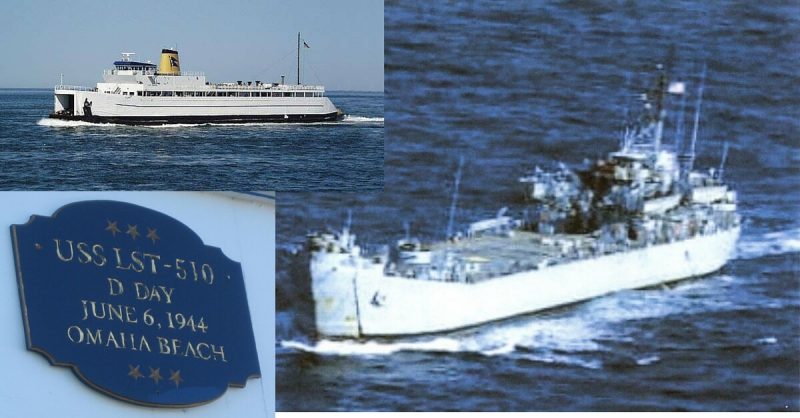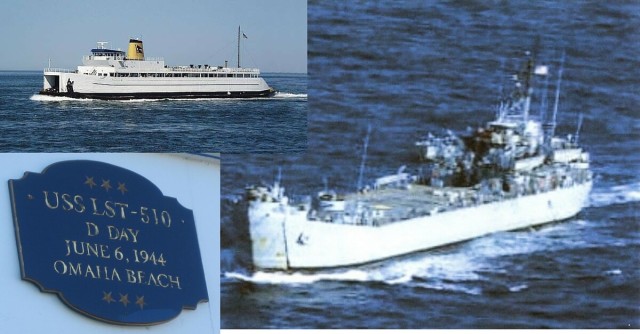The LST, Landing Ship Tank, is well remembered for delivering troops and equipment to shores in the Pacific Theater and the beaches of Normandy on D-Day. The flat-bottomed boats weren’t the easiest ship to sail, but their function served very well. From Sherman tanks to a fresh recruit named Sherman, LST’s provided transport for many different types of equipment and people during WWII.
Protection was provided by three 40 mm anti-aircraft guns. During D-Day, a blimp hovered above the ships offloading their men and equipment. But this is the story of the only one of those ships still in service today.
This “Green Monster,” as the LST was called, has undergone a transformation. It still carries people and vehicles from one destination to another. But instead of from England to Omaha Beach across the English Channel, LST-510 now ferries its modern cargo from Orient Point, Long Island, New York to New London, Connecticut and back again to Long Island. Of course, this 510 has seen some modifications over the years.
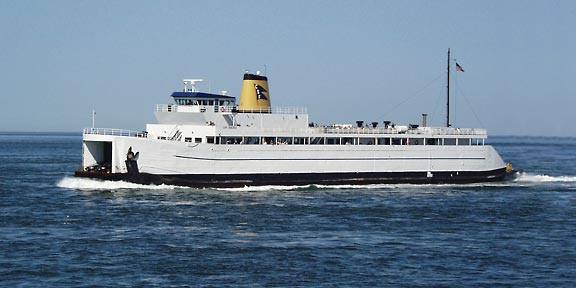
The ship was completed on November 30, 1943, by the Jeffersonville Boat & Machine Company in Indiana. She was commissioned the USS LST-510 on January 31, 1944, in New Orleans, LA. Measuring 328 feet from stem to stern and certified to carry 2100 tons of cargo, 1050 of this type of ship were built during WWII. Being flat-bottomed and rather slow moving, sailors nicknamed the ship the “Large Slow Target.” Despite this handicap, less than thirty were lost during the war. However, only one remains in service-the 510.
Decommissioned in July 1955, the ship was sold and converted to a passenger and vehicle ferry serving Delaware and New Jersey. Now she is owned by Cross Sound Ferry Services and after a complete refurbish she entered service as “Cape Henlopen.” New diesel engines were installed in 1995, ensuring an enduring service time for this warship.
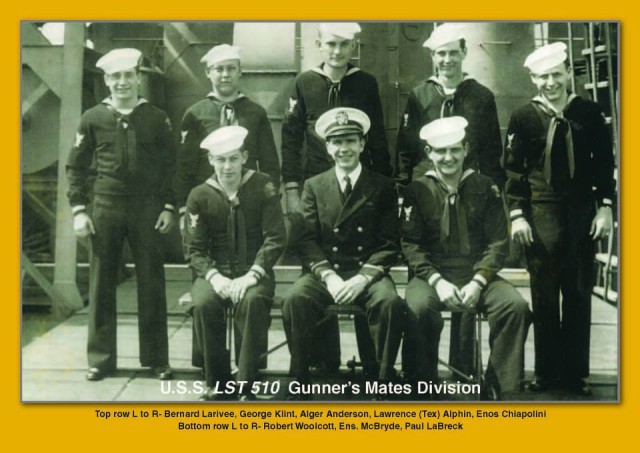
Lovely blue benches allow passengers to view the refurbished Orient Long Beach Bar Lighthouse in the Long Island Sound and the sights beyond on the shore of Connecticut. There is a Deli with a variety of food and drink offerings and padded seating inside, in a climate-controlled condition. How the soldiers who served on LST’s in WWII would have loved to have had some of those comforts!
On the 50th anniversary of D-Day in 1994, four men who served on LST-551 on June 6, 1944, arrived in Orient Point to board the ship again. They were amazed at the transformation, but could picture her as they knew her so many years before. Pointing out positions of equipment such as gun placements and the steep stairway descending into the engine room, the men remembered. One recalled how they never walked down those stairs; they slid on the handrails.
Down in the engine room, with the diesel engines roaring, one of the veterans found a familiar object among all the modern gizmos with flashing lights and whirring dials. A device called an “annunciator” allowed the wheel house to communicate instructions as to speed to the engine room. As levers were moved, bells would loudly sound to indicate the speed the captain desired.
Another veteran observed an area which had been an officers’ dining area. He recalled how the first captain was called, “The Bear,” because he roared at his green crew and he was a boxing champion. The Bear and an infantry commander were drinking one evening when a fight of sorts broke out. The captain had thrown a supply officer to the ground and was pounding him with his fists.
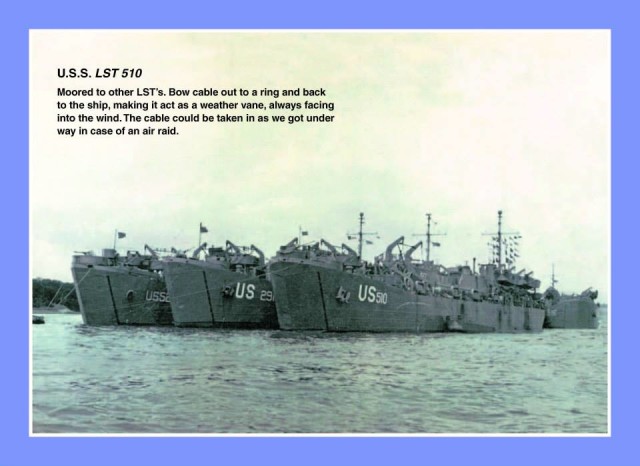
The veteran telling the story relayed how he rushed in, grabbed a ten-gallon container of something from a pantry, and swung it with all his might at the captain. Reeling, the officer pulled a knife, but others had arrived and held him back. The officer’s blind rage alarmed the sailor who had hit him. He didn’t sleep in his own bunk for a few nights. Understandably, that captain was relieved of duty and replaced by a much more popular fellow.
Another of the elderly veterans aboard their former warship recalled their bow doors were of no help to them on D-Day. The seas were so rough, soldiers had to go over the side to LCVP’s. The Landing Craft Vehicle and Personnel boats were lowered into the sixteen-foot waves about 300 yards away from the actual beach. Then the soldiers had to scale down forty-foot rope ladders into the smaller boats. The men fell silent as they remembered.
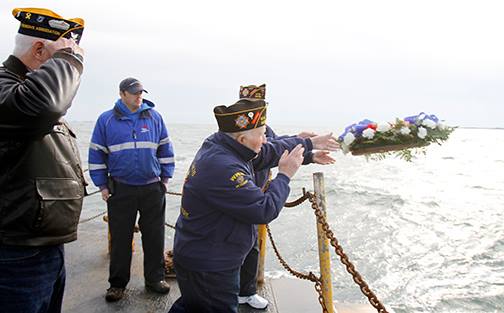
After spending three days at Omaha Beach, the 510’s combat mission was over. She was converted into a hospital ship. The men touring the ferry recalled that time with both horror and humor. One stated a curtained off area served as the main operating room, but occasionally the mess tables were used. He remembered doctors operating on mangled bodies might hand an amputated limb to him to throw over the side of the ship. That man became a funeral director who obviously had a strong stomach.
The group moved over toward the back of the chart house. During their time, a degaussing panel mounted there. This device was installed on ships to repel German magnetic mines. These unseen hazards were devastating Allied shipping with their magnetic fields. The unit of measurement in these magnetic fields was called a “gauss.” British Commander Charles F. Goodeve, along with others, designed their countermeasure device to affect the magnetism of the ship and coined the term “degaussing.” This theory has been used in televisions and computer monitors and is the culprit for erasing hard drives and other digital media. The degaussing panel likely saved many ships from disaster during WWII.
As the former crewmembers prepared to leave their ship, a shudder went through the entire ferry. Each man looked about with wide eyes. They knew what that was. A wave had rolled under the boat. The old LST still lived up to her reputation as a flat-bottomed Sea Sled. The general public can experience riding on the only LST from WWII still in service and remember what she has done for America.
By Elaine Fields Smith
Photos courtesy Cross Sound Ferry
